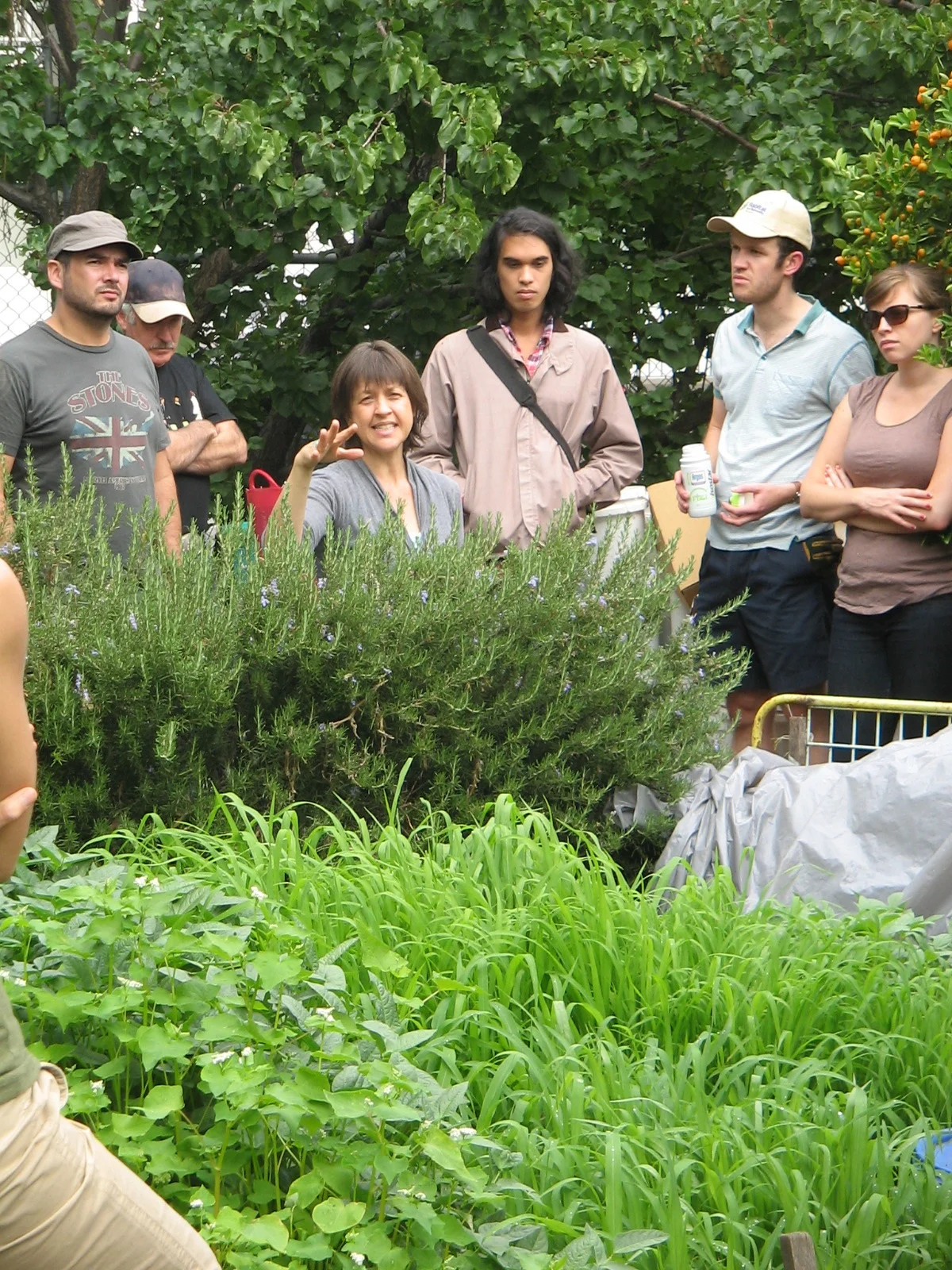GREEN MANURE
Living Mulch crops helped us convert a former car park into rich structured soil that we could plant into.
“Because the plot was so degraded, we needed additional help in bringing life back to the dusty patch ... so we turned to Green Manure.”
“All six Green Manure plants proved strong performers. Best of all the soil was everything we hoped for: rich and structured. ”
USED in agricultural crop rotation, Green Manure – or Living Mulch – is a way of quickly building soil and adding Nitrogen, with some Green Manure crops even used to clean soil of pathogens and nematodes.
It’s a technique that came to our rescue when, in the summer of 2013, we had a practical problem to overcome.
We wanted to plant a demonstration Food Forest in a Collingwood community garden but the 62m2 patch we were given by the garden’s back fence had been a former car park with highly degraded soil that had no structure or organic content. The lifeless dry soil was literally indistinguishable from the dust you sweep into a dustpan.
We knew we had to kickstart the process of bringing the soil back to life if we were to have any chance of creating a successful Food Forest.
We wanted to create rich living soil with structure that we could plant into and knew that an important part of the “no dig” process was not compressing the soil by stepping on the beds or disturbing the soil ecology through tilling or digging, instead using an approach of continually feeding from the top – like a forest floor – using mulch and compost rather than taking a conventional approach in which amendments are dug into the soil.
We started by creating a Hot Compost pile on the plot. In just 18 days we had 1m3 of rich compost to spread over the soil (see here). Because the plot was so degraded, we needed additional help in bringing life back to the dusty patch turning it into living soil we could plant into, so we turned to Green Manure.
Just for fun, we decided to make this into a trial of Green Manure varieties and divided our plot into six equal areas using string and stakes. We sowed seeds of French White Millet, Japanese Millet, Soybeans, Buckwheat, Fenugreek and Buckwheat in just about the worst time and conditions – on a 40C day in the second week of January 2013.
We also decided to use different approaches to the Lucerne straw mulch that we applied to each sectioned-off trial area: from no mulch to only a thin scattering of mulch, to medium and heavy mulching of the seeded plots.
Once the seeds were sown, mulch applied and everything well watered in, we put signs up identifying the Green Manure varieties, watered regularly and monitored with interest.
Over the coming weeks and months all varieties varied in their growth but by the end of summer all the Green Manure varieties had caught up to each other. To our great surprise, the differing approach to mulch seemed to make no difference to the final plants, although the moderately mulched seedlings grew faster than the others.
While we were in the mode of testing performance, for fun we added a portable worm farm that we created by putting compost worms and veggie scraps in a capped 110mm irrigation pipe that we sunk 2/3 sunk into the ground with lots of holes drilled into the sides where it was buried in the soil to allow the worm juices to flow out (see second last image below). We’d heard about this method using irrigation pipes or buckets with lids with the bottoms cut out that were used for individual fruit trees and were keen to experiment with it. We figured that the portable worm farm would fertilise the surrounding 1m2 or so of soil.
By the end of summer we had a lush bed of green plants (see final image below) with all six Green Manure plants proving strong performers. Best of all the soil was everything we hoped for: rich, structured and full of fertility.
At the end of summer when the plants had mature seedheads and were starting to dry out we did a chop and drop – cutting all the plants back to the base, chopping the stalks up into 2.5cm pieces and dropping it on to the soil to add Nitrogen and organic matter. The roots, which had created channels for air and water to pass through the soil, were left to decompose allowing the structure of the soil to remain undisturbed. Now all our plot needed was to be planted.
Using Green Manure crops in this way is a strategic use of annuals – plants that live their lives over a few seasons only. If you are dealing with a mature garden full of perennial plants you can have the advantages that Green Manure plants give by using perennial Green Manure plants such as Lucerne as ground covers – giving them an annual trim, or by planting the Scarlet Runner Bean, which lives for 7 years, to add Nitrogen to your soil without the disruption of using annuals as cover crops. Indeed any plants from the pea family of Fabiaceae will help put Nitrogen into your soil and can be used for other qualities including flower, colour, scent, harvest and form.
“The roots, which had created channels for air and water to pass through the soil, were left to decompose allowing the structure of the soil to remain undisturbed.
”











